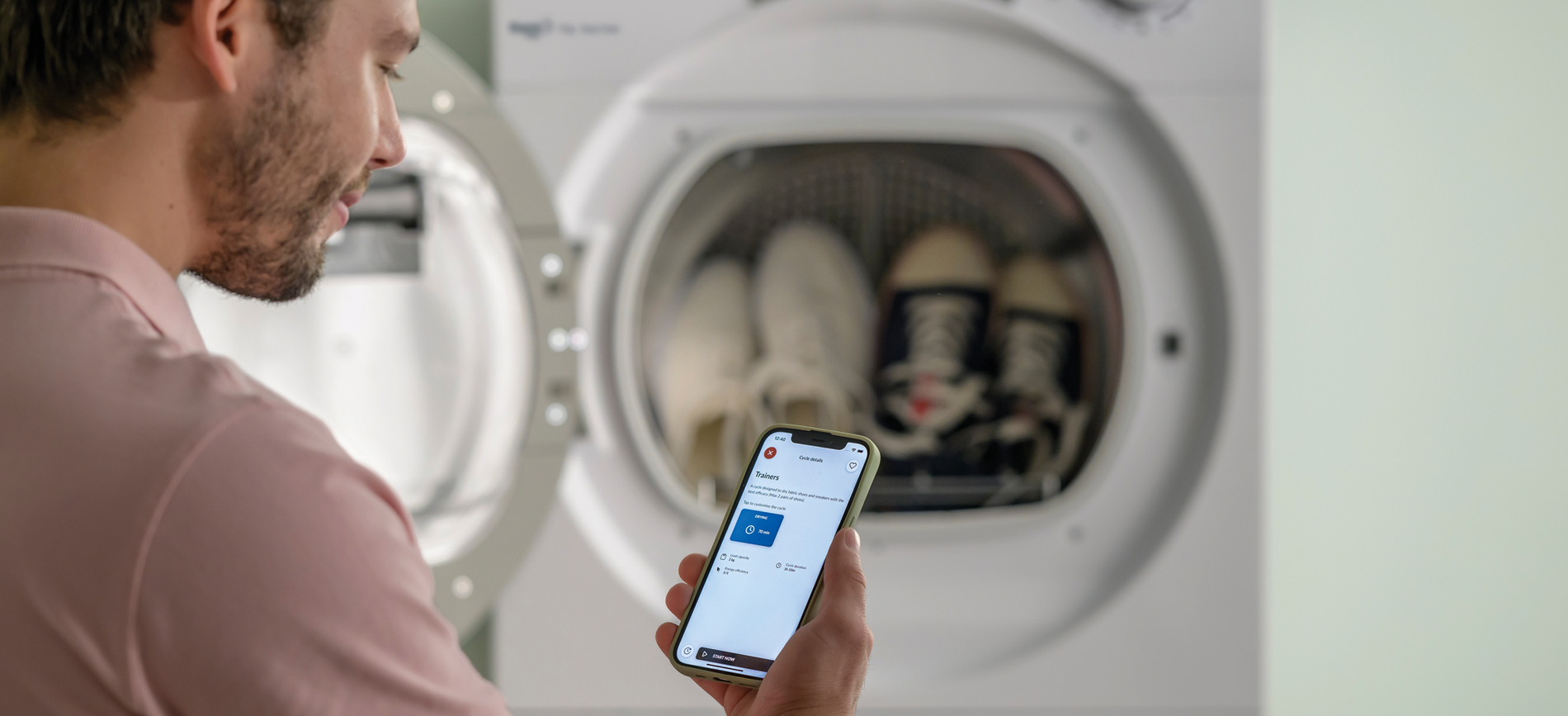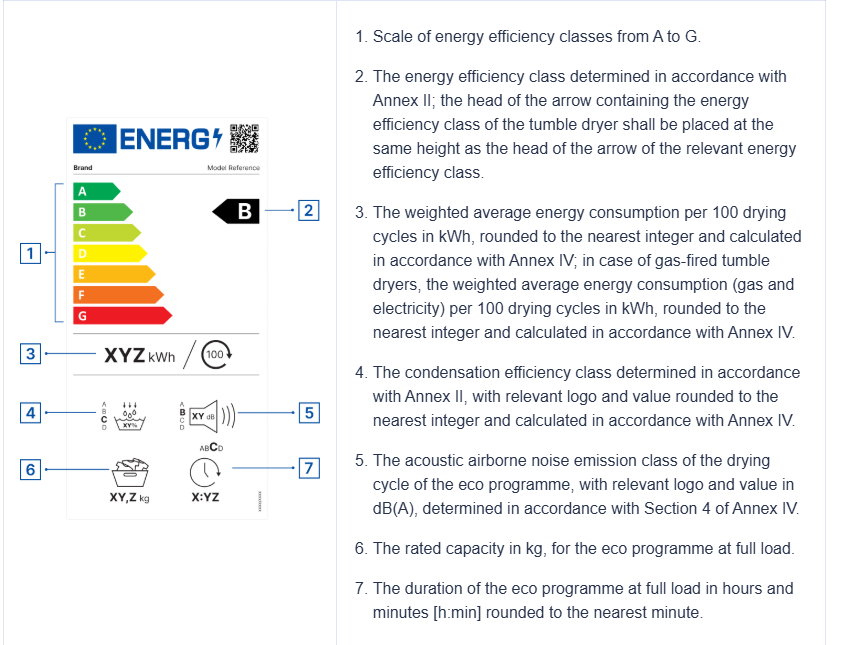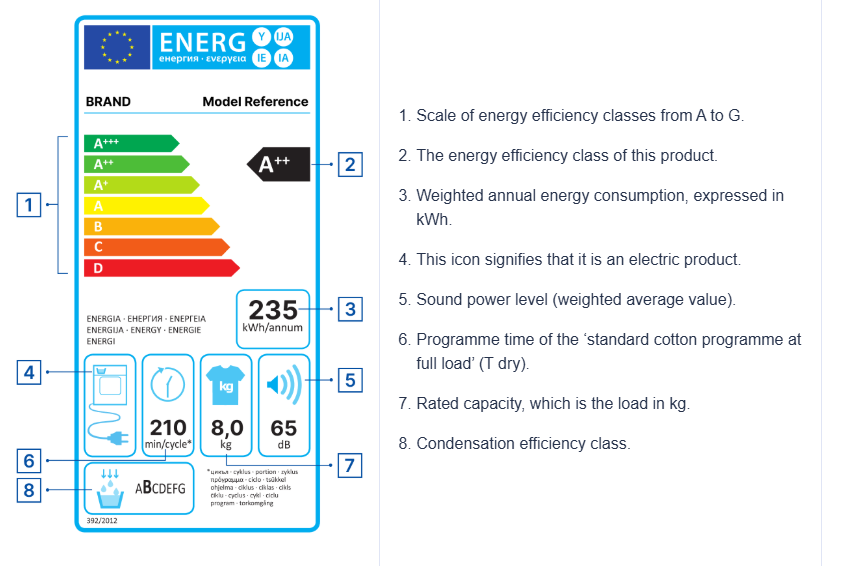- Article
- March 27, 2025
The energy labelling of tumble dryers is changing: what do buyers need to know?

Tumble dryers are increasingly finding their way into people’s homes as a way to save time, provide convenience and help them care for their clothes more efficiently. Although the use of tumble dryers in Lithuania has not yet reached the level of Western Europe, their sales are growing every year. When choosing these home appliances, it is important to consider both the amount of electricity they consume and the noise and drying time they generate. All these indicators are listed on the energy labels of tumble dryers, which are changing from 1 July this year. ACC Distribution’s Brand Development Manager, Aušrinė Juozelskė, shares her insights on the changes to these dryer labels and the most important things to look out for.
Class A+++ no longer exists
One of the most important changes identified by A. Juozelskė is the change in the designation of the energy class, which used to be from D to A+++. “On the new energy cards, the energy consumption data will be recalculated and the class labelling will go from G to A. So now the highest energy class will be A, which will be more efficient than the current highest class A+++.
Aušrinė Juozelskė, Brand development manager at ACC Distribution
The new energy card is most easily identified by the QR code in the top right-hand corner. “In the past, QR codes were not used on energy cards, so this is one of the best indicators to know whether it is an updated label or the old one. During the transition period from 1 March to 30 June, both energy cards will be available on packs, but only the old version can be used until 1 July and the new version from 1 July. Dryers that cannot be supplied with the new energy card will be allowed to be marketed until 31 March 2026,” points out A. Juozelskė.
Another new feature on the energy cards is that the noise level of the appliance and the time taken for a standard drying programme when the dryer is fully loaded will be graded from A to D. Where A is the highest grade. “This change will help us to assess more quickly whether the dryer will meet the buyer’s expectations. Of course, noise decibels and drying time will also be given as standard, but the classes will help you to assess how these differ from other appliances,” says a representative of “ACC Distribution”.
It is also important to remember that sellers are required to display the energy card both in physical stores on the goods and in online shops. If the card is not available, the buyer has the right to ask the seller for it.


Lithuanians mostly choose economical dryers
According to “BRC Group’s” market research data, more than 12,000 dryers were sold in Lithuania in 2020 and 15,000 dryers per year in 2024.
“Although sales of tumble dryers in Lithuania are growing, they are still far below the level of Western Europe, where around 60-70% of households have these appliances. The majority of sales in Lithuania are in the A++ and A+++ energy classes. In 2024, sales of the most energy-efficient models increased by a fifth to 58%. The sales of non-economical models (energy class A+ to D) are very low – only 3-6% – so we can see that people are really paying attention to the technical specifications of appliances. In recent years, “Samsung”, “AEG”, “Electrolux” and “Beko” have remained the most popular dryer manufacturers in our country,” says A. Juozelskė.
She also notes that Lithuanians are choosing dryers that are increasingly spacious. ” “While 8 kg dryers were the most popular in 2020-2022, 9 kg dryers are dominating from 2023. Of course, people who don’t have space for two separate appliances in their homes will opt for a washing machine with a drying function. Sales of such washing machines have increased by more than 30% in the last three years,” says A. Juozelskė.
Dryers are the most appreciated for easier maintenance of clothes
A.Juozelskė attributes the increasing sales of tumble dryers to the fact that more and more people are appreciating not only the fact that laundry dries faster, but also the impact it has on fabrics. “Of course, one of the biggest advantages is that if you need to dry several items of clothing urgently, you can do it in an hour. If the dryer is full, it can be done in 2-3 hours. And in this case, it doesn’t matter what the weather is like outside,” emphasises the home appliance specialist on the main and most important advantage of dryers.
“It’s true that many tumble dryer users also appreciate them for keeping their laundry fluffy, even without using fabric softener. This is because in the dryer they are constantly changing position, whereas when drying outdoors or indoors they just hang, so the fabric is not fluffed up. In addition, if the laundry is taken out of the dryer as soon as the drying programme is finished and hung on hangers, there is almost no need for ironing,” says A. Juozelskė, listing the additional advantages of these machines.
She also points out that tumble dryers can be a useful option for allergy sufferers. “Drying clothes outdoors, especially in spring when you want to take advantage of the warmth of the first rays, causes them to become covered in pollen, which is one of the main allergens. Allergy sufferers also appreciate the fact that dryers use very hot air (steam on some models), which helps to reduce the amount of germs, allergens and bacteria. For this reason, families often buy tumble dryers when they are expecting their firstborn, to keep their often washed clothes fluffy and remove any micro-organisms” says A. Juozelskė.
“Observing the market trends, I am convinced that the Lithuanian population will increasingly choose to have tumble dryers in their homes, as it is no longer a luxury item or an exclusive choice. People are increasingly appreciating devices that make household chores easier. Of course, it is very important to choose an appliance that meets your expectations, so you should look at different models, compare them and consult the sales staff before you buy,” advises A. Juozelskė, who reiterates that from 1 July this year you should not confuse the new energy class labelling with the old one.

